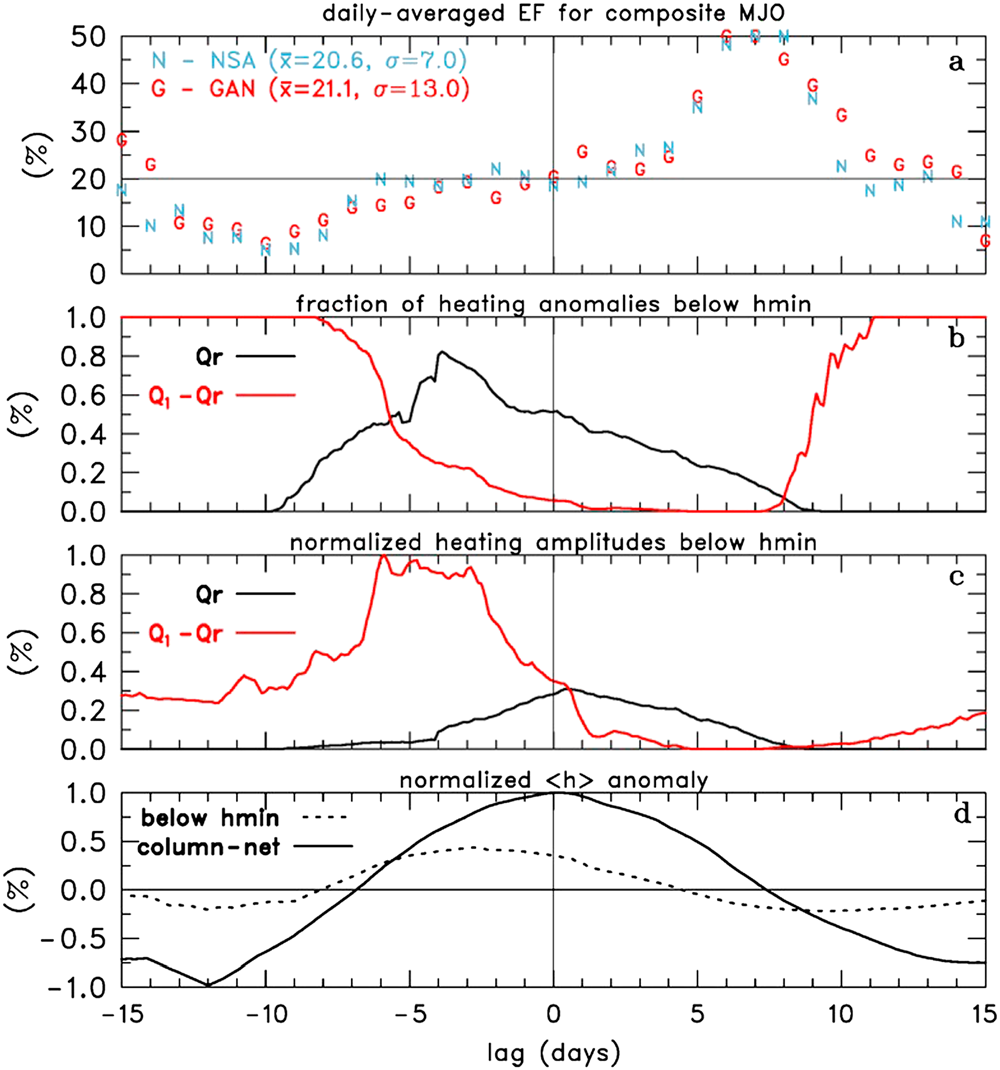The role of radiative heating in the MJO
Submitter:
Johnson, Richard H — Colorado State University
Xie, Shaocheng — Lawrence Livermore National Laboratory
Area of research:
Cloud Processes
Journal Reference:
Science
Despite its broad impacts on global weather and climate, the Madden-Julian Oscillation (MJO), which dominates tropical intra-seasonal variability, remains poorly represented in many weather forecasts and global climate model simulations. To improve our understanding of key processes of MJO initiation and propagation, this study, resulting from an Atmospheric System Research grant, uses observational data sets collected during the Dynamics of the MJO (DYNAMO) field campaign to focus on the relationships between radiation, clouds, and convection.
Impact
Previous MJO studies often emphasized the crucial role of diabatic heating Q1 connected with convective processes. Only in recent years have studies shown that when radiative heating reaches a critical fraction of convective heating (~20%), radiative-convective instability could result in MJO-like modes. However, multi-model results and western Pacific field data analysis disagree on this notion; thus there remains a debate on the impact of radiative heating on MJO. The DYNAMO field campaign provided unprecedented observations of the MJO over the Indian Ocean. This study principally uses data collected at the Gan Island ARM mobile facility to provide a clearer picture of the radiative impacts on the MJO and confirm that radiative heating can reach and even exceed 20% of convective heating, which is the predicted critical threshold for a convective-radiative instability. This study also provides some unique diagnostic metrics to evaluate global climate models and potentially expose reasons for their good and bad MJO simulations.
Summary
This study focuses on three MJO events during three months (October to December 2011) over Gan Island in the Indian Ocean. Radiative fluxes are derived from ARM radar data and large-scale heating rates from an objective variational analysis. Based on column-net, as well as vertical profiles of radiative heating rates, this study shows that MJO modulates radiative fields with near-zero net-tropospheric cooling during its active phase due to longwave absorption and re-emission. MJO-composited radiative heating rates exhibit tilted structures with height reflecting changes in the cloud population and associated water vapor fields. Over the MJO lifecycle, net-tropospheric radiation varies ~0.5 K/d, enhancing the amplitude of the convective heating signal by ~20% in the mean with a minimum in this enhancement ~10 days prior to peak MJO rainfall and maximum ~7 days after. This suggests that as the MJO convective envelope weakens over the central Indian Ocean, cloud-radiative feedbacks help maintain the mature MJO as it moves eastward. This study has been highlighted by Eos: https://eos.org/research-spotlights/what-makes-the-biggest-cycle-in-tropical-weather-tick.


